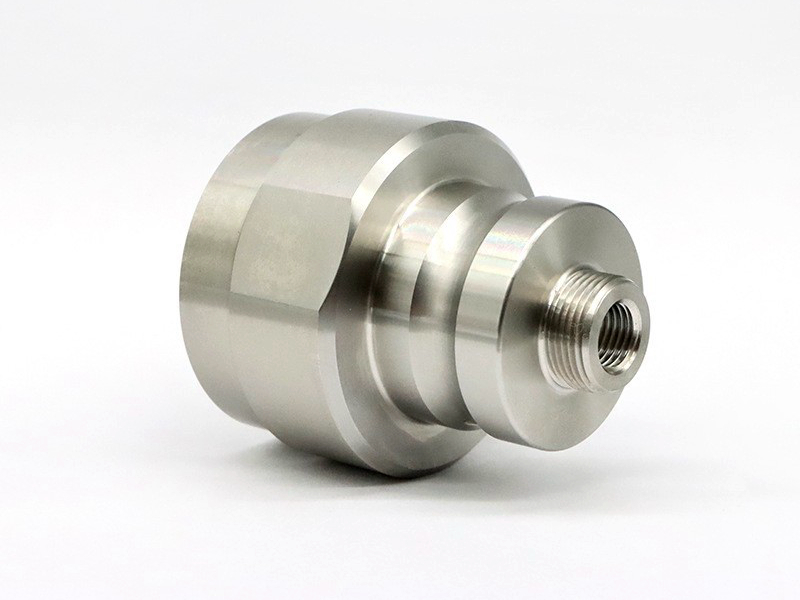CNC Turning of Superalloy Components for Nuclear High-Temperature Pressure Vessels
Introduction
The Nuclear Industry demands materials that maintain structural integrity under extreme temperatures, pressures, and radiation conditions. Superalloys, known for their exceptional strength, resistance to creep, and superior thermal stability, have become essential materials for critical components in high-temperature nuclear pressure vessels.
High-precision CNC turning services are increasingly vital in manufacturing superalloy components, ensuring tight dimensional tolerances, excellent surface finishes, and repeatability. CNC turning significantly enhances reliability and safety for pressure vessels operating under severe nuclear conditions.
Superalloy Materials
Material Performance Comparison
Superalloy | Tensile Strength (MPa) | Yield Strength (MPa) | Max. Operating Temp (°C) | Typical Applications | Advantage |
|---|---|---|---|---|---|
1240-1450 | 1030-1200 | 700 | Reactor core supports, pressure vessel components | High strength, excellent creep resistance | |
790-850 | 360-450 | 1030 | Corrosion-resistant liners, pressure vessels | Exceptional corrosion resistance, thermal stability | |
1100-1350 | 850-950 | 900 | High-temperature fasteners, turbine components | Outstanding high-temperature performance, fatigue resistance | |
1230-1400 | 900-1050 | 980 | High-pressure vessel components, structural supports | Excellent oxidation resistance, strength retention |
Material Selection Strategy
Selecting appropriate superalloys for nuclear pressure vessels relies heavily on operational requirements:
For components exposed to the highest strength and moderate temperatures, Inconel 718 provides ideal strength and creep resistance.
For highly corrosive environments at elevated temperatures: choose Hastelloy C-276 for superior corrosion protection.
High-temperature fasteners and critical turbine components: Nimonic 90 ensures excellent performance under thermal fatigue.
Components requiring extended thermal stability and strength retention: opt for Rene 41, ideal for critical nuclear structural integrity.
CNC Turning Processes
Process Performance Comparison
CNC Turning Technology | Dimensional Accuracy (mm) | Surface Roughness (Ra μm) | Complexity Level | Typical Applications | Key Advantages |
|---|---|---|---|---|---|
±0.005-0.015 | 0.4-0.8 | Very High | Reactor core components, pressure fittings | High dimensional precision, reliable consistency | |
±0.005-0.02 | 0.6-1.2 | Extremely High | Complex vessel parts, connectors | Reduced setups, high complexity capabilities | |
±0.01 | 0.8-1.6 | High-Very High | Nuclear reactor internals, structural parts | Specialized tooling and optimized machining for superalloys | |
±0.002-0.01 | 0.2-0.4 | Very High | Seals, valves, precision interfaces | Superior surface finishes, extremely tight tolerances |
Process Selection Strategy
Optimal CNC turning selection is driven by complexity, precision demands, and application specifics:
General nuclear reactor components with moderate complexity: Superalloy CNC Machining is ideal, offering tailored tooling efficiency.
Complex geometries requiring simultaneous operations: use Multi-Axis CNC Turning to streamline setups and improve accuracy.
Components demanding the tightest dimensional tolerances: Select Precision CNC Turning or combine it with CNC Grinding to achieve superior accuracy and finishes.
Surface Treatment
Surface Treatment Performance
Treatment Method | Corrosion Resistance | Wear Resistance | Temperature Stability (°C) | Typical Applications | Key Features |
|---|---|---|---|---|---|
Excellent (≥1000 hrs ASTM B117) | Moderate-High | Up to 1200 | Reactor internals, heat shields | Outstanding thermal insulation, high oxidation resistance | |
Excellent (600-800 hrs ASTM B117) | Moderate | Up to 400 | Pressure fittings, precision surfaces | Improved corrosion resistance, ultra-smooth finish | |
Superior (≥1000 hrs ASTM B117) | High (HV2000-3000) | Up to 600 | High-wear seals, valves | Exceptional hardness, excellent wear protection | |
Excellent (500-700 hrs ASTM B117) | Moderate | Up to 350 | General nuclear components | Chemical cleaning, effective corrosion resistance |
Surface Treatment Selection
Surface treatments enhance nuclear superalloy performance:
Components exposed to extreme temperatures and oxidation: apply Thermal Barrier Coating (TBC) for optimal protection.
Parts requiring smooth finishes and high corrosion resistance: Electropolishing enhances surface smoothness and corrosion stability.
High-wear areas in critical interfaces: PVD Coating significantly increases durability.
General-purpose nuclear components: Passivation ensures clean, corrosion-resistant surfaces.
Quality Control
Quality Control Procedures
Precise dimensional inspections conducted via Coordinate Measuring Machines (CMM).
Surface roughness validation using high-precision profilometry.
Mechanical property testing per ASTM standards, including tensile and yield strength assessments.
Non-destructive testing methods, such as ultrasonic testing (UT) and radiographic inspection (RT), to detect internal flaws.
Corrosion resistance evaluations conducted through ASTM B117 salt spray testing.
Documentation of compliance with nuclear industry standards (ASME BPVC, ISO 9001, ANSI N45.2), ensuring full traceability.
Industry Applications
CNC-Turned Superalloy Applications
Reactor pressure vessel internals and critical pressure components.
High-temperature reactor core supports and fittings.
Valve and sealing assemblies for high-pressure containment.
Heat shields and liners for enhanced thermal protection.
Related FAQs:
Why are superalloys preferred for nuclear pressure vessel components?
How does CNC turning improve precision in nuclear reactor applications?
Which superalloy provides the best performance at extreme nuclear operating temperatures?
What surface treatments extend the lifespan of CNC-turned superalloy parts?
What quality standards apply to CNC-turned components in nuclear high-temperature environments?

